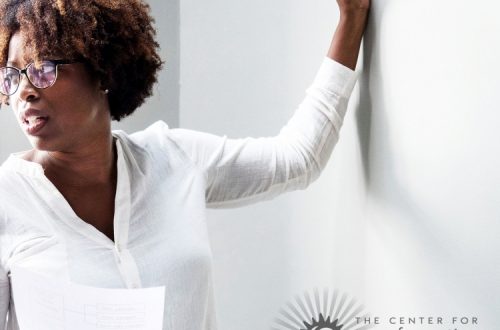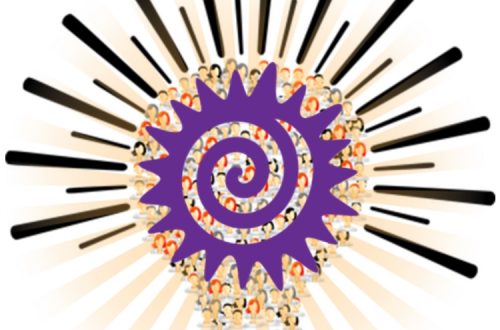Are Your Diversity Efforts Falling Short? It May Be Because…
Even with the best of intentions, diversity efforts might have fallen short of expectations at your organization.
Don’t worry. It’s not your fault.
When this happens, there are a couple culprits often to blame. One of the most common?
One person (or a small group of people) is expected to create a more inclusive workplace for the entire organization.
It can’t be done that way. If only one or a few people are working towards an organization’s goals of equity and inclusion, think for a minute about all the others who may actually be reversing those efforts!
How can just one person be expected to undo centuries of racism and discrimination?
“No one is born hating another person because of the color of his skin, or his background or his religion. People learn to hate, and if they learn to hate, they can be taught to love, for love comes more naturally to the human heart than its opposite.”
-Nelson Mandela
We weren’t born to hate. We learned it. And with persistent efforts – working at the group level – your organization can interrupt the dynamics that are hindering your diversity efforts.
You Can’t Do It Alone. Infusing Inclusion Must Include Everyone.
Focusing and adjusting our own behaviors and attitudes is a great start – but not the solution.
We need to work at the Group Level as well. We need to RECOGNIZE and INTERRUPT the common microaggressions and daily indignities that negatively impact our colleagues and undermine high performance and retention.
We also need to work at the Organizational Level and examine every policy, practice, program, and service with an Inclusion Lens to identify what groups they support and which, if any, face possibly unintentional barriers and obstacles to success.
“Unconscious perceptions govern many of the most important decisions we make and have
a profound effect on the lives of many people in many ways…Unconscious patterns can play
out in ways that are so subtle they are hard to spot.”
— Howard Ross
Many of our behaviors are learned. We are oftentimes doing/acting/judging/criticizing without even thinking – we are acting unconsciously. By recognizing these behaviors – in ourselves, in our group, and in organization practices – we can interrupt discrimination and racism as we collaboratively work to create truly inclusive work environments for all.
Knowledge + Action = Meaningful, Systemic Change
You Know the What. You Know the When. Everyone Needs to Know the WHY.
Another culprit – and one that’s sometimes overlooked – when diversity efforts fall short is that not everyone is clear on the “WHY.”
What: Infusing Diversity and Inclusion.
When: Now is the time to end discrimination.
The most important question: Why?
The benefits of working in an inclusive environment, where everyone is respected and included, are many, as illustrated in an article that appeared in Chron. Among the benefits of diversity in the workplace are:
- Increased productivity
- Expansion of creativity
- Improved employee morale
While many organizations have mission statements expressing their intent for an inclusive environment, many employees don’t know how this applies to them or why they should infuse equity and inclusion into everything they do. Making employees aware of the benefits of an inclusive environment is a win-win situation – for employees and the organization.
Encouraging Participation in Inclusion Training Can Be a Challenge
Another component often to blame when diversity efforts fall short is that participants in trainings don’t feel engaged, inspired, or motivated.
I get it: employees love to hear of time off and pay raises. They dread the words “mandatory training,” or “educational seminar.”
While an organization can mandate diversity training, employees may oftentimes show up physically – but be a mental no-show.
And let’s face it. We’ve all had flops in some training seminars. It happens. But don’t let it define you. Instead, be inspired by this quote from Brené Brown:
“There is no innovation and creativity without failure. Period.”
Get creative in your training plans! Formulate a questionnaire for employees asking what they want to learn, what problems they want to solve in the organization, and what skills they want to improve upon. Asking for their input increases the chances they may be open to learning during the workshop.
Don’t just preach and teach. Incorporate storytelling into your training – its power is underrated. An article in Psychology Today highlights the potency of storytelling:
- Stories teach us about collaborating and connecting. Emotions are shared and stories become a foundation for meaningful communication.
- Stories tell us about life, its experiences and how we relate to each other.
- Storytelling sparks our imagination – we begin to see things differently and increase empathy.
You’ve Got Your Wings: Now Fly!
Now that you’ve deepened your capacity to design and facilitate effectively and hopefully conducted a needs assessment, you’re ready to get your DEI training underway. By including employee input, incorporating storytelling into your workshop, and getting your creativity on, you’re ready to help motivate and mobilize others.
May Michelle Obama’s quote on success inspire you in all that you do today and every day:
“Success isn’t about how much money you make. It’s about the difference you make in people’s lives.”
Click here to get fast, free access to one of my most popular webinars, Creating Inclusion. You can listen to it anytime, anywhere – a perfect fit for your busy schedule…share with your colleagues, too!




